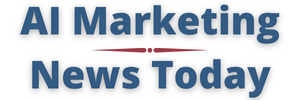
Geoffrey Alphonso, CEO of Alef Education.
Technology—particularly artificial intelligence (AI), Machine Learning (ML) and Big Data—is transforming every aspect of our lives, including education. Digital tools that offer new ways of teaching, learning and measuring outcomes are reshaping classrooms globally. From personalized platforms that adapt to individual learning needs to analytics that address knowledge gaps, technology is redefining what it means to educate. The numbers reflect this momentum: the global AI in education market is projected to grow from $5.18 billion in 2024 to $112.3 billion by 2034.
Yet, while these innovations hold immense promise, they also raise a critical question: how do we ensure that the human essence of education—empathy, creativity, emotional intelligence and resilience—remains at the center of the learning journey?
The Human Touch In A Tech-Driven World
While AI can deliver tailored learning paths and automate administrative burdens, it cannot replicate the teacher who inspires confidence, the mentor who guides with empathy or the role model who instills resilience. The future of education depends on finding harmony between technological innovation and human connection, guaranteeing that AI supports rather than replaces the human touch that defines meaningful learning.
For this vision to succeed, educators and policymakers must design systems where AI handles analytics, feedback and content personalisation, while teachers focus on contextual guidance, socio-emotional mentoring and ethical oversight. This division of roles makes sure that technology amplifies, rather than replaces, the human connection that makes education meaningful.
At the same time, aligning education with workforce needs is urgent. With projections suggesting that AI could displace between 400 million and 800 million workers globally by 2030, preparing students for an AI-integrated future is critical. EdTech companies must create platforms that encourage students not just to use AI, but to view it as a tool for creative problem-solving and innovation.
Beyond Technology: The Broader Challenges
The challenges in crafting education systems that balance AI and human connection extend beyond technology adoption alone. These include addressing the digital divide, ensuring access to quality devices and reliable internet for all students and bridging the gap between tech-savvy educators and those who struggle to integrate AI effectively into their teaching.
Additionally, there are ethical considerations around data privacy, algorithmic bias and the transparency of AI-driven decisions that influence learning outcomes. Cultural and pedagogical differences also play a role, as one-size-fits-all solutions rarely meet the diverse needs of learners across regions and socio-economic backgrounds.
Policymakers must establish clear frameworks for responsible AI adoption, promoting equity, inclusivity and ethics remain at the forefront.
The Critical Role Of EdTech In Shaping The Future
As EdTech companies, we must lead in this transformation. Our platforms must provide interpretable insights, so teachers understand why recommendations are made. Explainable AI builds trust, maintains accountability and allows educators to integrate AI suggestions meaningfully. Platforms should also enable bidirectional feedback, letting AI learn from teacher adjustments while teachers refine strategies based on AI analytics—creating an iterative cycle of continuous improvement.
Beyond functionality, EdTech solutions must spark creativity and critical thinking. Our platforms should inspire students to view AI as a canvas for innovation rather than merely a tool for automation. For instance, project-based learning encourages students to apply AI in solving real-world challenges like environmental issues or improving community services, turning theoretical knowledge into creative impact.
Interdisciplinary approaches further inspire students by integrating AI into art, literature and music. Whether generating digital artwork, composing AI-assisted music or analysing literary patterns, students begin to see AI as a creative partner.
Equally essential is cultivating ethical awareness. EdTech platforms should embed real-world case studies and ethical dilemmas into the curriculum provided. This approach will help students understand the societal impact of AI and recognize their responsibilities as future technology creators.
EdTech companies must also invest in digital literacy training for teachers, providing comprehensive courses and workshops to give educators the necessary skills and confidence to use digital tools effectively.
They should also work with educational institutions to facilitate infrastructure development, ensuring educators have access to the resources and technology required to integrate digital tools into their teaching practice. By bridging the gap between traditional teaching methods and the evolving digital landscape, we can foster a more interactive, impactful learning environment.
The Road Ahead
Research from the OECD and UNESCO emphasizes that the future of education requires a harmonious balance between technological innovation and human connection. The OECD’s “Trends Shaping Education 2025” report explores how AI and new technologies will change the workplace and social interactions, urging educators to foster socio-emotional learning and community despite less direct human contact. UNESCO’s “Reimagining our Futures” report proposes a new social contract for education to rebuild relationships with each other, the planet and technology, recognizing that these elements are intertwined and at risk.
Realizing this vision requires collaboration among policymakers, educators and EdTech innovators. By making sure AI enhances learning while keeping the human spirit at its heart, we can prepare the next generation to thrive in a world where technology and humanity work hand in hand.
Forbes Technology Council is an invitation-only community for world-class CIOs, CTOs and technology executives. Do I qualify?







